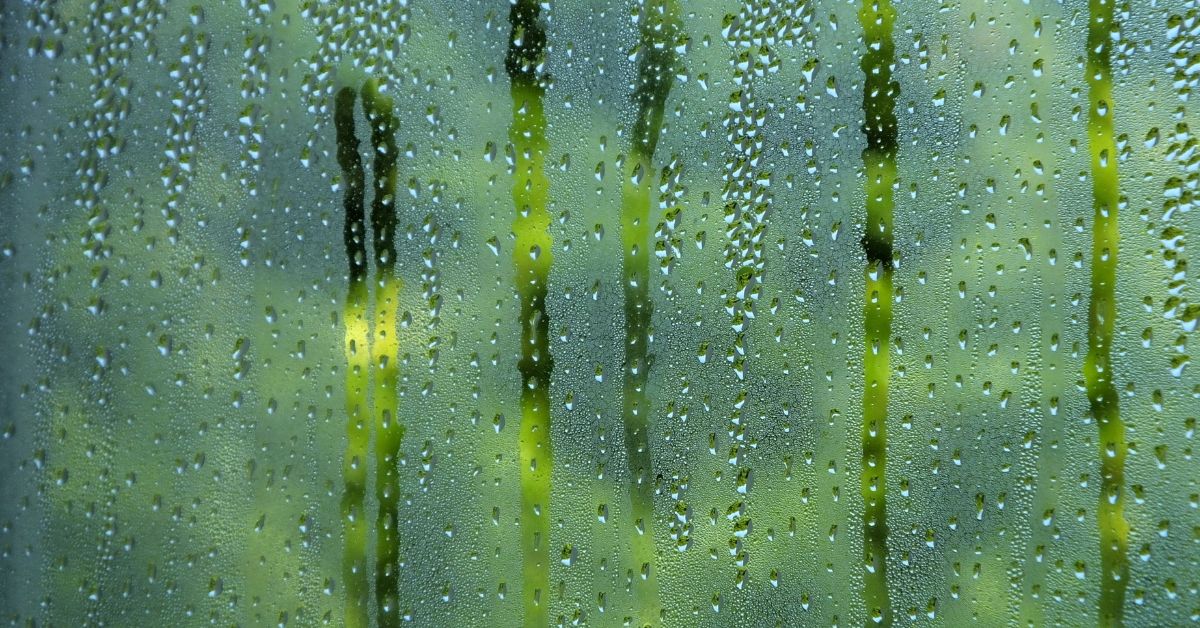In fall and winter, moisture may be seen accumulating on windows. In many cases, the reason is due to excessive indoor humidity levels. Window condensation may also be a visual indication of other indoor air quality issues, with odors and VOCs (volatile organic compounds) trapped in the home.
In the Midwest and Northeast, during the summer and fall, the indoor RH (relative humidity) normally ranges from 40-60%. Moving from fall into winter, as the outdoor temperatures drop, condensation starts to occur on the bottom of the windows. The window temperature is the coldest there, the dew point is reached, and window condensation appears as a result.
Better building practices, spray foam insulation, house wrap and other materials used in new homes trap moisture inside – leading to window condensation. Sources of humidity are cooking, showers, washing clothes, perspiration, or breathing. Frequently, the bath ventilation fans are low quality, improperly ducted and not operated long enough (due to excessive noise) to help reduce humidity.
Excess humidity must be lowered to a more acceptable level, usually between 30-40% RH. An ERV (Energy Recovery Ventilator) or air exchanger can accomplish this efficiently, without opening windows, thus saving energy. Odors from cleaning materials, pets, and cooking can also be flushed from the home.
In winter months, the ventilator exhausts stale inside air while bringing in an equal amount of fresh outside air. Much of the heat energy from the exhausting air is recaptured over to the incoming fresh air stream, thus the term air to air heat exchanger is used for this type of IAQ (Indoor Air Quality) appliance. Some moisture is recaptured into the fresh air stream, so the indoor humidity is not entirely depleted.
The system can also be operated during the summer with air conditioning. The ERV may utilize existing HVAC (Heating Ventilation Air Conditioning) ductwork, or operate as a stand alone system.




0 Comments